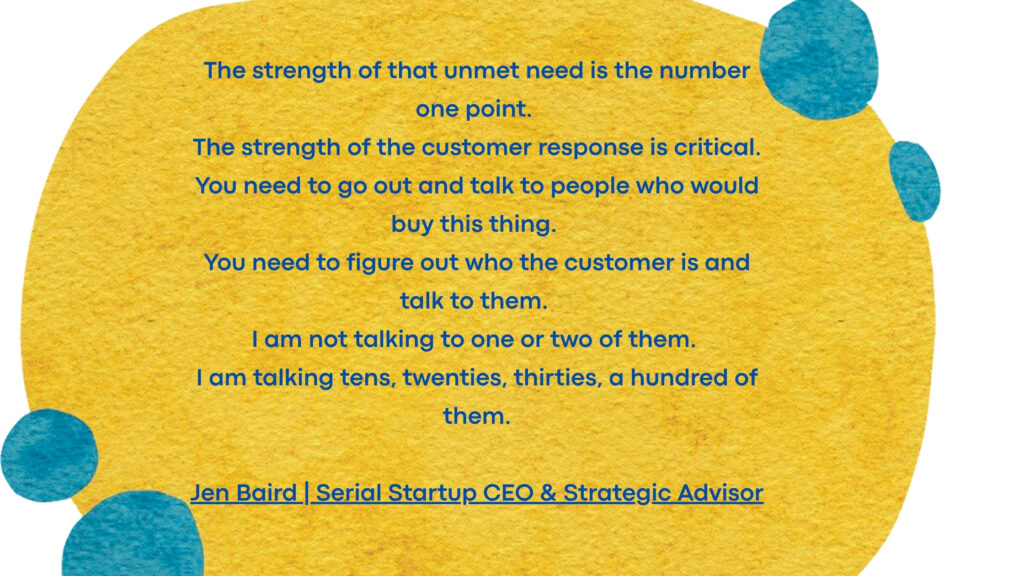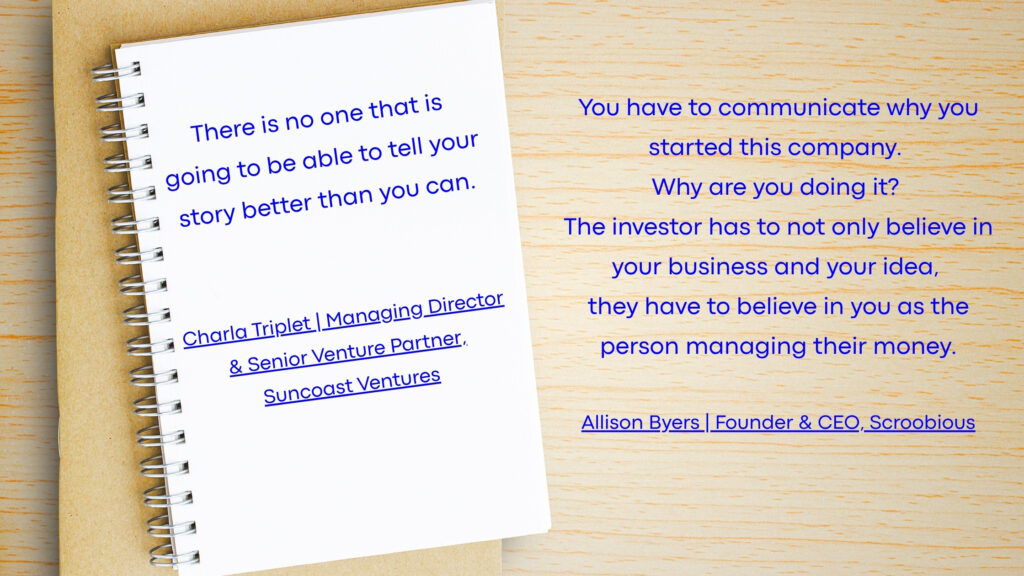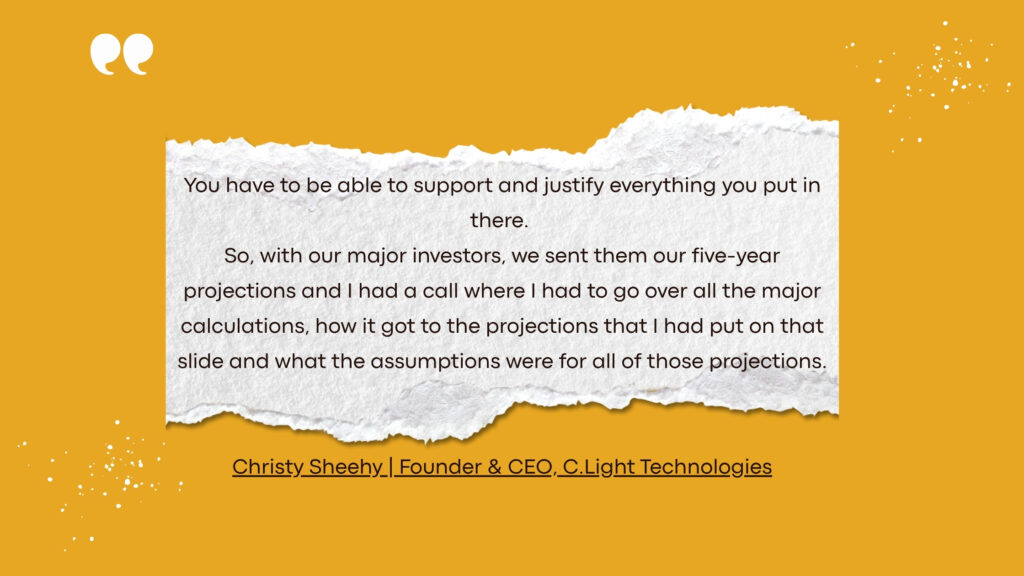If you’re a deep tech founder, your path to success is a lot harder, longer and riskier than it is for a traditional startup. The usual rules rarely apply: you can’t bootstrap, MVP’s can’t be built in a weekend and moving fast and breaking things isn’t an option.
To help you out, we rounded up the best deep tech insights from over 70 episodes of the Invisible Ink podcast.
#1: Pick One And Stick With It

Your biggest challenge as a deep tech founder is your ability to focus – on one use case, one market, one value proposition. The red flag for investors is when you’re so in love with your technology that you can’t pick one to start – like a toddler dazzled by too many toys. When this happens, investors know you don’t have the discipline to execute successfully.
Pick one market to start with – you will have a much better shot at the others with a strong foothold established.
- What one use case offers you the best chance of clear proof, high value and fast traction?
- What path to proof requires the least capital investment?
- How well does this beachhead position you for the future in terms of revenue, cash flow and market credibility?
#2: Yes, You Must Still Get Out of the Building

Deep tech founders often hate getting out of the lab – the real world is too messy.
But customers won’t buy unless they’re convinced that what you’re selling will work in their specific context – e.g., manufacturing, surgery. Investors want real-world proof when they’re evaluating your tech. If you haven’t gotten out of the building, investors will pass.
- Have you talked to real world users – e.g., engineers, physicians, to demonstrate usability?
- Can you back up your claims with actual customer quotes and feedback?
- Can you demonstrate you deeply understand the implementation context to ensure your technology delivers?
#3: Kill the Lone Wolf Syndrome

As a technical founder your persona is often built on being the best, or even the only expert, in a niche area. You’re the one with the answers. Becoming a founder, however, means you mostly have questions – what market is best for this technology? How should you monetize it? What resources do you need?
You need a tiny army of experts – in marketing, engineering, finance. This means you know to ask for help. Investors test for this in different ways – in terms of your “leadership” or ability to build a team. It’s the same question – can you grow out of your expert identity and seek help from others on what you don’t know?
- Can you name the top three must-have skill areas for your startup to achieve traction?
- Do you know where to find people who have these skills?
- Are you comfortable acknowledging that you don’t know the answers, and have the courage to ask for help?
#4 – Be a Strong Filter

Here’s a common scenario: A founder is pursuing a specific plan – e.g., their market or their value proposition. They go talk to an expert and change direction based on what the expert said. The problem starts when the next expert offers a completely different opinion. A founder will flip-flop on their strategy multiple times, often within weeks, just because experts they talked to said so.
There’s a balance between openness to new information and having faith in your path. The question is – do you have a solid thesis, a story, for why you’re pursuing a specific path for your startup? This thesis about your value proposition, best initial customers, how you’ll charge for it, is what acts as your compass for filtering advice.
- Do you have a solid thesis for every part of your startup’s strategy?
- Do you have (even) an informal process to evaluate advice from experts against your thesis?
- Can you clearly articulate why you decided to change or retain your thesis in the face of any expert advice you get?
#5 – Don’t Outsource Your Story, Your Strategy or Your Fundraising

When your technology is still in the lab, investors have little objective evidence to decide whether to fund you. How your startup turns out will depend on you and your vision.
The fundability signals come from your story, your experience, your passion, your logic for your go-to-market plan. Investors also know where you end up will have little resemblance to where you started – you’re the X factor that will lead its evolution to its final form.
Outsource any part of this, and you lose the biggest reason any investor is interested in funding you, as well as your startup’s biggest success factor.
- Are you owning the story and the strategy for your startup?
- Are you being the face of the startup in key conversations – with potential partners and investors?
- Are you constantly reviewing and testing your story against new information and the challenges / questions posed by investors and other key influencers?
#6 – Own Your Financial Model

Your financial model isn’t there to demonstrate how big your startup can get. It’s to help you understand, test and refine the levers that will drive growth. You don’t need to be the king or queen of spreadsheets to master your model.
Your financial model is there to help you articulate – to yourself and other resource gatekeepers – what drives the business, what levers move the needle, and how changes in the outside world impact your ability to survive and thrive.
Spreadsheet mastery isn’t required – but mastery of the narrative and the mechanics is.
- Have you tested your ability to tell the story of your financial model?
- Do you know the big movers and shakers behind your startup’s growth and profitability?
- Can you articulate the external events that can make or break your success?
#7 – Lead With the Business, Not the Breakthrough

Many deep tech pitches sound like technical presentations – dense, technical, with no hint of market data. Pitch the business as if your technology is irrelevant, except as it relates to market acceptance.
This single switch will have an outsize impact on your focus, your traction, and investors’ interest in your startup. Everything else will fall into place automatically.
- Do you lead with the problem, not the technology?
- Do you emphasize the market – its needs, the size and what it takes to win?
- Do you focus on how the business will make money?
Making It Work – Build a Flip Switch
Success in deep tech is all about switching seamlessly between two operating modes – the precise, technical scientist side and the broad, strategic and fluid business side.
To make this switch:
- Create a list of the top business questions that will drive your startup’s path and progress. How well can you answer these?
- Assign technical responsibility to a technical team member – you still own the technology, but they own the questions that will help you keep the science side on track
- Track progress to a tight list of must-haves.
Where is your biggest opportunity? What step will help you tap it faster?







